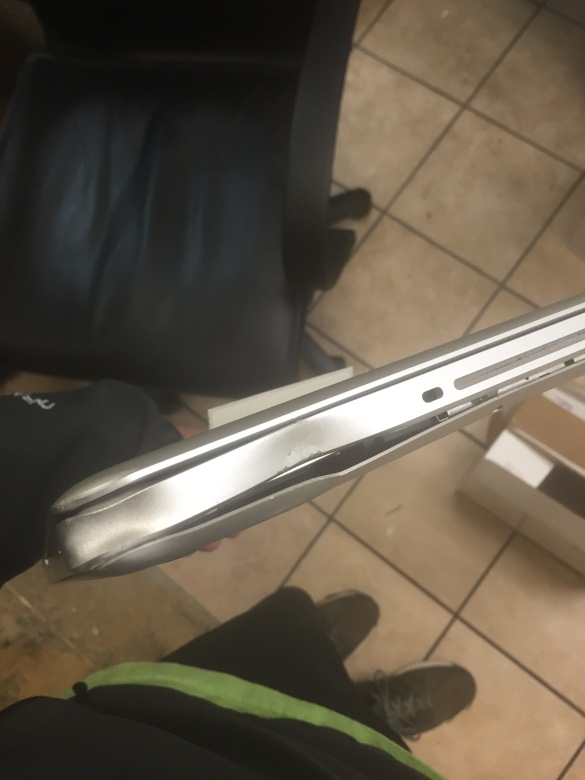Good afternoon again friends, I’m getting a lot of blogging done today that has been built up on my “to do” list for a few weeks. I’m sorry that I’m hitting you all at once, but I found some time to get my typing done today.
Recently, I was working on a 13″ MacBook Pro (Unibody) that was sent into us damaged. Of course we can repair this; however in this particular case the customer asked us NOT repair fix the “cosmetic” damage and just work on the electronics.

Here’s what I found out about this unit. As Forrest Gump might have put it, “Fluids is as fluids does.” Thinking of liquids helps us understand how air flows. For all general purposes, air flows just like water. Flow will inevitably follow the path of least resistance. That means the flow will usually take the shortest, unrestricted path from the point of high pressure to the low pressure area.
Take this “cosmetic damage” for instance. Yes, we can repair this unit and leave the “dents” in the side of the unit. However when I tested it, the fans that cool the logic board were turning on pre-maturely. Most of the air was being pushed out of this “cosmetic” hole in the side of the computer, rather than through the vents on the back which ensures that the air flows OVER the logic board and CPU to keep it cool, rather than AROUND it.
Why was this unit failing? It’s because the fans were not able to keep the internal components of the computer cool enough to operate under specifications and therefore overheating.
This is just a friendly post to keep in mind that these devices are meant to be “whole” when operated, and that the art of airflow applies to your expensive electronics, there’s no doubt about that.
Take care, Ryan